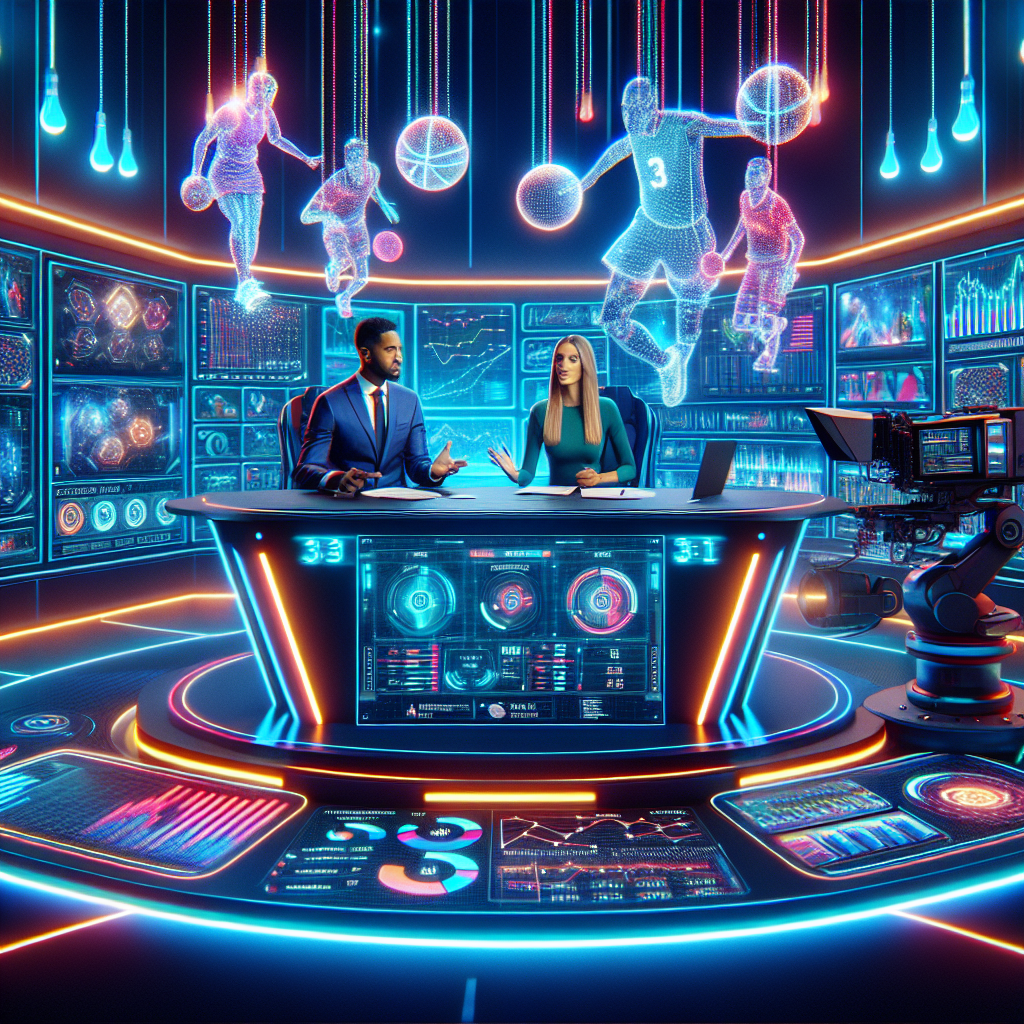In recent years, artificial intelligence (AI) has been revolutionizing the way we consume sports content by enabling personalized experiences for viewers. From tailored highlight reels to customized commentary, AI is changing the game for sports broadcasting. This article will explore how AI is being used to personalize sports content and enhance the viewing experience for fans.
Personalization of Sports Broadcasting Content
AI has the ability to analyze vast amounts of data in real-time to provide personalized experiences for viewers. This technology is being used in various ways to enhance sports broadcasting content, including:
1. Tailored highlight reels: AI algorithms can analyze game footage and create personalized highlight reels for viewers based on their preferences. For example, AI can identify key moments in a game, such as goals or big plays, and compile them into a highlight reel that is customized for each viewer.
2. Customized commentary: AI can generate personalized commentary for viewers based on their preferences and viewing history. For example, AI can analyze a viewer’s favorite teams and players and provide commentary that is tailored to their interests.
3. Predictive analysis: AI can analyze data to predict the outcome of games and provide viewers with insights into key matchups. This can help fans make informed decisions when placing bets or participating in fantasy sports leagues.
4. Interactive experiences: AI-powered chatbots and virtual assistants can provide viewers with real-time updates, stats, and analysis during games. This interactive experience allows fans to engage with sports content in new and exciting ways.
5. Personalized recommendations: AI can analyze a viewer’s viewing history and preferences to provide personalized recommendations for upcoming games, highlights, and other sports content. This helps viewers discover new content that aligns with their interests.
Overall, AI is revolutionizing sports broadcasting by providing personalized experiences that cater to the individual preferences of viewers. This technology is enhancing the viewing experience for fans and creating new opportunities for content creators and broadcasters.
FAQs
1. How does AI personalize sports broadcasting content?
AI analyzes vast amounts of data in real-time to provide personalized experiences for viewers. This technology is used to create tailored highlight reels, customized commentary, predictive analysis, interactive experiences, and personalized recommendations for fans.
2. How does AI create tailored highlight reels?
AI algorithms analyze game footage and identify key moments, such as goals or big plays, to create personalized highlight reels for viewers. These highlight reels are customized based on the viewer’s preferences and interests.
3. How does AI generate customized commentary?
AI analyzes a viewer’s favorite teams and players to provide personalized commentary that aligns with their interests. This technology creates a unique viewing experience for each viewer by tailoring the commentary to their preferences.
4. How does AI predict the outcome of games?
AI analyzes data to predict the outcome of games and provide viewers with insights into key matchups. This predictive analysis helps fans make informed decisions when placing bets or participating in fantasy sports leagues.
5. How does AI provide interactive experiences for viewers?
AI-powered chatbots and virtual assistants provide real-time updates, stats, and analysis during games. This interactive experience allows fans to engage with sports content in new and exciting ways, enhancing the viewing experience.
In conclusion, AI is transforming sports broadcasting by providing personalized experiences for viewers. This technology is revolutionizing the way we consume sports content and creating new opportunities for content creators and broadcasters. As AI continues to evolve, we can expect even more innovative developments in the personalized sports broadcasting space.

